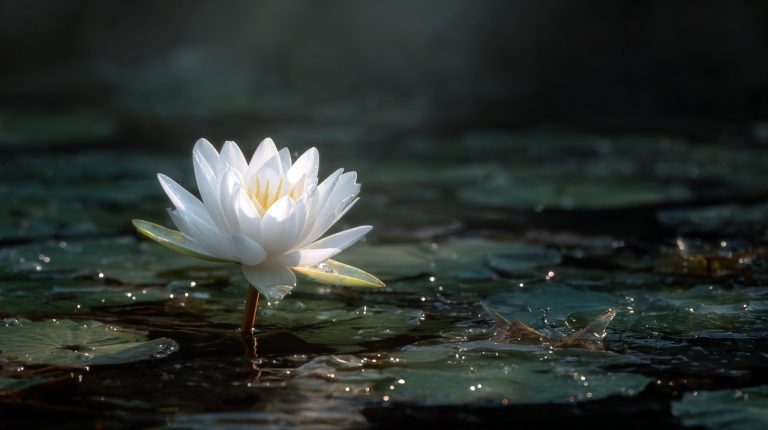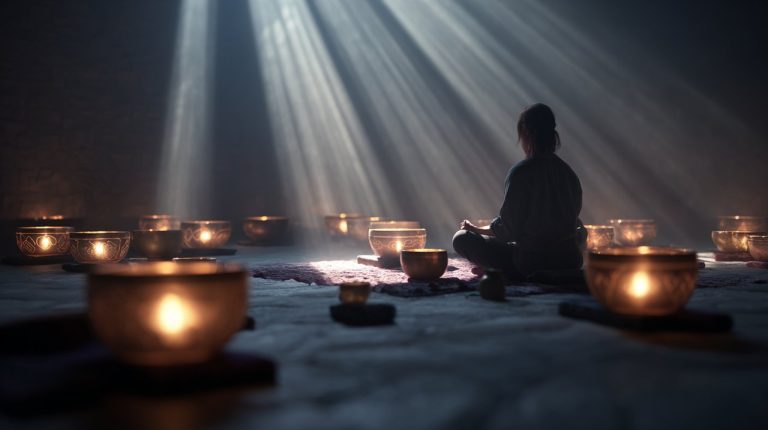Buddhist Ghanta: Symbolism, Ritual Use, and Union with Dorje
When you hear the chime of a Buddhist Ghanta, is it just a simple bell calling practitioners to prayer? Often, we tend to oversimplify this powerful spiritual tool in Vajrayana Buddhism. The truth is, the Ghanta, always paired with its inseparable partner, the dorje, is far more than an instrument. Together, they embody a profound philosophical synthesis: the essential union of wisdom and compassion, central to Vajrayana meditation practice and the esoteric philosophy of tantra.
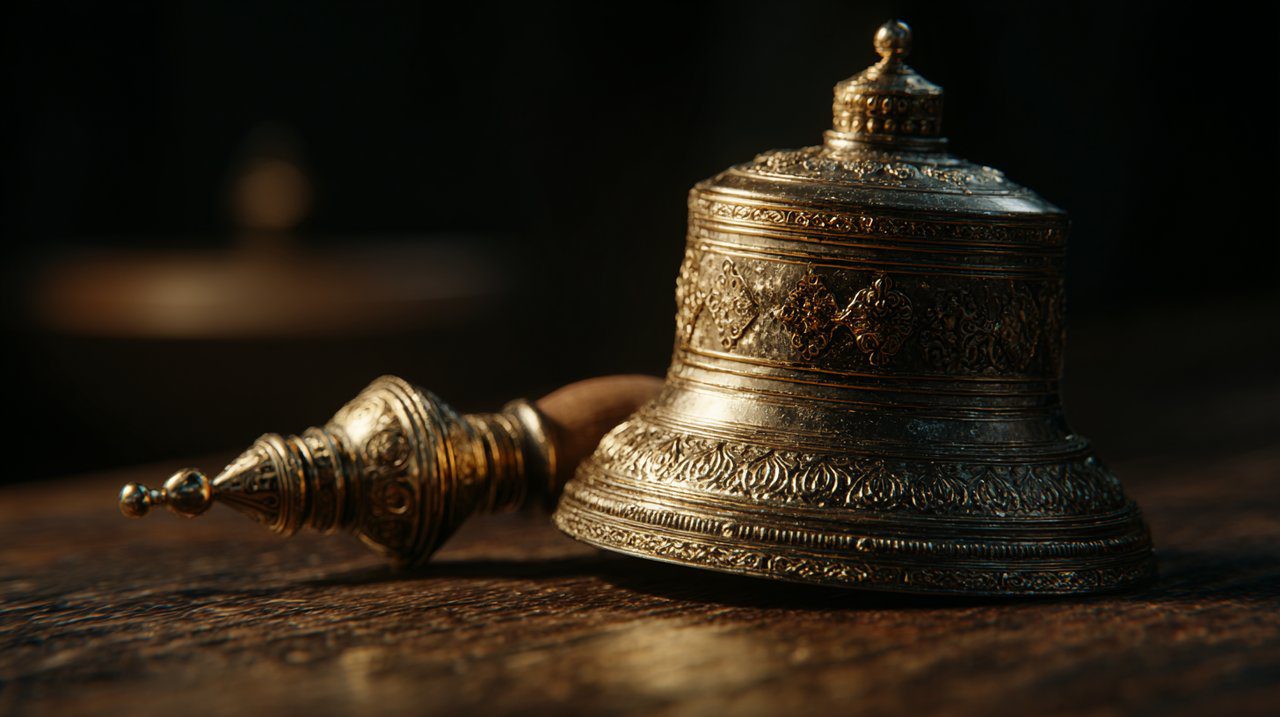
The Buddhist Ghanta: Its Form and Deeper Purpose
In Vajrayana traditions, the Ghanta, a Sanskrit word for bell, plays a fundamental role in Buddhist rituals. Its design is quite distinctive: a bell-shaped body, often beautifully adorned with symbolic motifs, and a handle frequently shaped like a half-dorje.
When rung, the Ghanta produces a clear, resonant sound that transcends mere auditory experience. This sound acts as a powerful vibrational offering and helps mark different segments of a ritual, preparing the mind for deeper engagement. The specific metals used in its construction are carefully chosen to create this unique, mind-focusing tone.
The Dorje and Ghanta: A Powerful Union of Method and Wisdom
When you see the Ghanta and dorje held together, it’s crucial to understand they’re not just two separate spiritual tools. Instead, they symbolize a perfect union: the Ghanta representing wisdom, and the dorje embodying skillful means. This profound synthesis lies at the very heart of Vajrayana tantra, highlighting a dynamic and active interplay that’s essential to the practice.
The Dorje: Symbol of Unbreakable Compassion and Method
The dorje, also known as Vajra, stands for indestructible reality and enlightened activity. Its Sanskrit name cleverly means both 「diamond」 and 「thunderbolt」, capturing its dual nature: an unyielding purity combined with an irresistible force. This implement represents the male principle, embodying skillful means (upaya) and profound compassion.
Notice its five-pronged ends; these symbolize the five wisdoms of a Buddha and the five Dhyani Buddhas. In essence, the dorje is designed to cut through ignorance and delusion, serving as a powerful tool for spiritual transformation.
The Ghanta: Echoes of Wisdom and Emptiness
Conversely, the Ghanta symbolizes wisdom (prajna) and the profound understanding of emptiness (shunyata). Its hollow shape beautifully represents the emptiness of all phenomena—the very space from which all sounds and forms emerge. It embodies the female principle, acting as the receptive vessel for wisdom’s realization.
The bell’s sound itself is a powerful metaphor for the impermanence and deep interconnectedness of everything that exists. The clapper striking the bell symbolizes the interaction between subject and object, a dynamic that ultimately dissolves into the expansive sound of emptiness.
Their Dynamic Interplay: A Tantric Dialogue
During practice, the practitioner holds the dorje in their right hand, representing method, and the Ghanta in their left, symbolizing wisdom. This specific holding pattern highlights the dynamic balance and essential integration of these two core principles. This active engagement is truly paramount.
Their combined use points towards the enlightened mind, where compassion guides wisdom and, in turn, wisdom informs compassionate action. It’s a dialogue of immense philosophical depth, far richer than any simple description can convey.
Ritual Applications: Sound, Gesture, and Deepening Meditation
- Invoking deities and enlightened beings.
- Purifying the ritual space, effectively clearing negative energies.
- Consecrating offerings, transforming them into sacred substances.
The resonant ringing of the bell itself creates a sacred sonic environment, preparing the mind for deeper spiritual work.
Cultivating Inner States During Meditation
Beyond their role in external rituals, the Ghanta and dorje are incredibly important for cultivating specific inner states during meditation practice. Their combined use helps us internalize that essential union of wisdom and compassion.
The Ghanta’s sound, for instance, can powerfully facilitate mindfulness and concentration, gently guiding the meditator deeper into their practice, acting as a steady anchor for awareness. Actively holding and using these objects deeply engages the practitioner, continuously reinforcing the profound philosophical principles they embody.
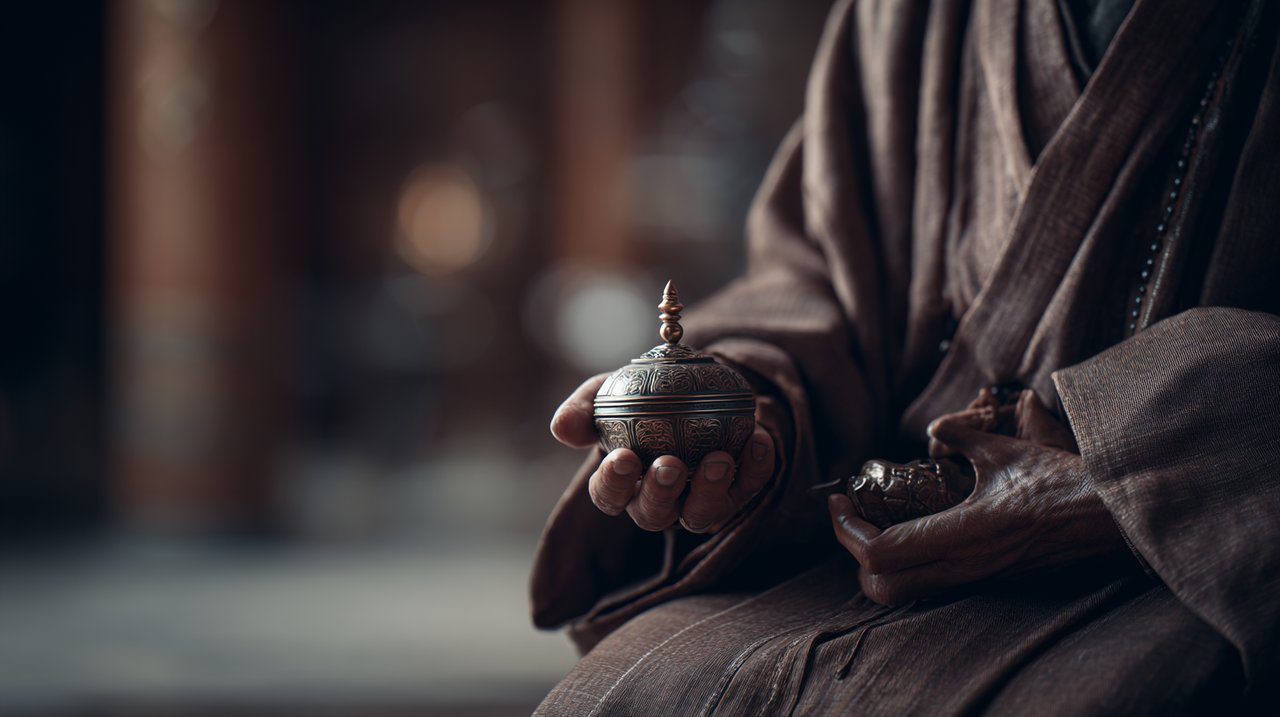
Beyond Ritual: The Profound Philosophy of Vajrayana and Tantra
The Path of Skillful Means: An Accelerated Journey
The Ghanta and dorje are absolutely central to the Vajrayana path, often known as the Diamond Vehicle. This tradition emphasizes achieving rapid enlightenment through skillful means, and their symbolism perfectly reflects this accelerated journey.
These aren’t just passive symbols; they are active instruments for transformation within tantra. Practitioners engage with them directly to experience the profound unity of dualities, often visualizing themselves as a deity expertly wielding these powerful implements.
A Microcosm of Enlightenment Itself
Together, the Ghanta and dorje function as a living microcosm of enlightenment itself. They beautifully represent the awakened mind, a state where wisdom and compassion are not just present, but perfectly integrated and expressed.
They act as a constant, tangible reminder of the ultimate goal of Buddhist practice: the realization of non-duality. Every chime of the bell and every deliberate gesture reinforces this fundamental truth, teaching us that true spiritual power emerges from a deep sense of harmony.
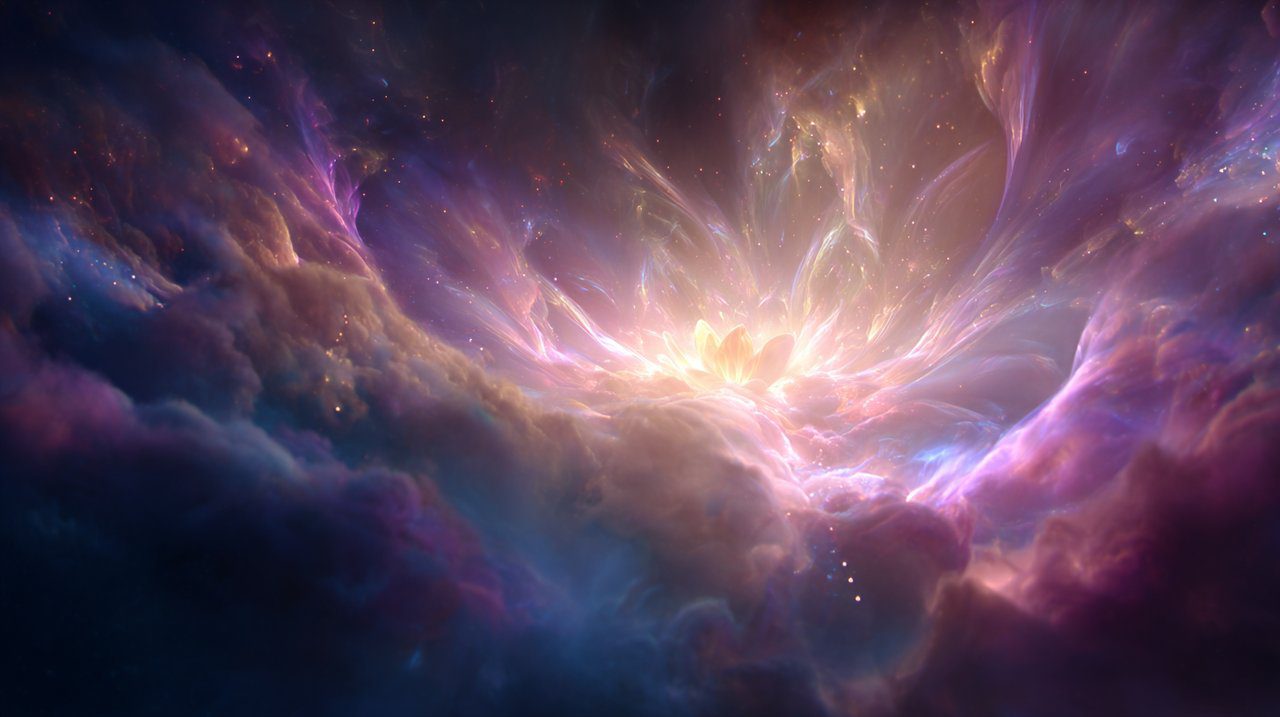
Placing the Ghanta in Context: How It Compares to Other Spiritual Tools
Many spiritual traditions incorporate tools for focus or ritual. For example, prayer beads (malas) help with mantra recitation, and singing bowls create serene meditative soundscapes, often for passive reception. However, the Ghanta and dorje distinguish themselves significantly. What makes them unique is their explicit representation of an active, dynamic union.
They are deliberately wielded in a performative dialogue, requiring bilateral engagement from the practitioner. Unlike tools primarily designed for singular focus, the Ghanta-Dorje union demands a conscious, integrated performance that brings together wisdom and method. This makes them uniquely active implements for transformation, directly engaging the practitioner in the co-creation of reality.
So, to circle back to our initial question: the Buddhist Ghanta, when paired with its partner the dorje, is undeniably far more than just a simple bell or ritual implement. It stands as a profound, dynamic symbol of the union of wisdom and compassion, truly central to Vajrayana meditation practice and the esoteric philosophy of tantra. Their active interplay, representing enlightened action, demands deep engagement and understanding from anyone who uses them. This synthesis moves far beyond superficial observation, revealing the intricate connections that underpin Buddhist philosophy. Ultimately, understanding these sacred objects offers a direct pathway into the very heart of Vajrayana thought, inviting us all to contemplate the profound harmony essential for genuine spiritual awakening.
💡 Frequently Asked Questions
The Buddhist Ghanta and Dorje, when used together, symbolize the profound union of wisdom (represented by the Ghanta) and skillful means or compassion (represented by the Dorje). This synthesis is central to Vajrayana meditation practice and tantric philosophy.
The Ghanta, or bell, symbolizes wisdom (prajna) and the understanding of emptiness (shunyata). Its hollow form represents the emptiness of all phenomena, the space from which all sounds and forms arise. Its sound metaphorically represents the interconnectedness of existence.
The Dorje, also known as Vajra, symbolizes indestructible reality, enlightened activity, and profound compassion. It represents skillful means (upaya) and is designed to cut through ignorance. In practice, the practitioner holds the Dorje in the right hand (method) and the Ghanta in the left (wisdom).
During meditation, the combined use of the Ghanta and Dorje helps practitioners internalize the union of wisdom and compassion. The Ghanta's sound can enhance mindfulness and concentration, acting as an anchor for awareness, while the active engagement with both objects reinforces their philosophical principles.
Unlike tools primarily for passive reception or singular focus (like malas or singing bowls), the Ghanta and Dorje represent an active, dynamic union. Their use involves a performative dialogue and requires bilateral engagement, demanding a conscious integration of wisdom and method from the practitioner.

